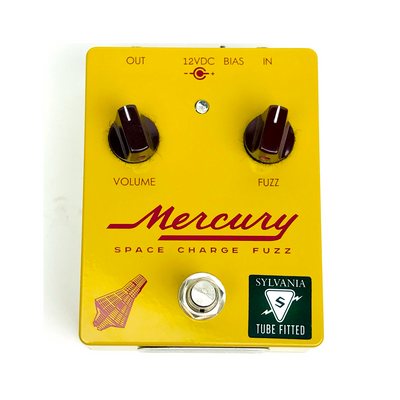Cwejman VCO-6 Multi-Output Oscillator, grey
Cwejman VCO-6 Multi-Output Oscillator, grey
Couldn't load pickup availability
Listed price includes tariffs + duties + fees (approximately 14%) we are now required to pay on imported Cwejman modules.
The Cwejman VCO-6 is a single voltage controlled oscillator and it has six individual waveforms (see below). The frequency is controlled by manual controllers (knobs) and FM (leveled inputs). The VCO-6 can by sync-ed by an external signals frequency, as well.
Frequency controllers:
The oscillator's frequency is controlled by RANGE (from C2 to C8), TUNE knob (6 semitones in audio mode and 12 semitones in LFO mode) and leveled FM inputs (DC or AC coupled FM1 and exponential F2 and FM3). Frequency modulation (leveled FM1, FM2 and FM3 ) determines the intensity of frequency modulation and/or pitch control. The FM2 and FM3 inputs are carefully calibrated for 1Volt/octave sensitivity and it tracks the musical scale for more than 8 octaves.
Waveforms:
The VCO-6 is equipped with six separate waveform outputs. The different waveforms contain different harmonic structures respective to their overtone content. Thus they sound different from each other and can be used as raw material for creating different types of sounds. This is a brief description of waveforms:
- Sine contains low order harmonics with low amplitude and sounds "dull" or "pure".
- Triangle contains more high order overtones than sine and sounds still "dull" and "pure" but with more "edge".
- Saw contains many overtones and sounds "rich" and "cutting". It is especially useful for strings, brass and vocal-like sounds.
Pulse controlled waveforms:
The VCO-6 has three different pulse controlled and modulated waveforms:
Width modulated saw tooth which act as a true detuned dual saw tooth oscillator when the PWM1 is modulated with a low frequency signal (preferably a triangle shaped waveform) and the detuned frequency (frequency offset between two detuned saw tooth waves) is equal to doubled modulated signals frequency. When the PWM1 is modulated with the signal in audio range the pulse modulated saw tooth act as saw tooth ring modulator.
The VCO-6 has two different sounding pulses:
Pulse1 and Pulse2 . The Pulse1's pulse width is controlled by a signal coupled to the PWM1 INPUT and thru switch PW by the manual controller PULSE WIDTH in position 1&2. The Pulse2's pulse width is controlled by the manual controller (knob PULSE WIDTH) and a signal coupled to the PWM2 input. Both pulses can be controlled from square waveform to very short pulses (spikes). Pulses are symmetrical in the whole range of pulse width and they are different from the "classic" variable pulse which is asymmetrical when the pulse width is not equal to 50% (square waveform). The Pulse1 contain more even harmonics (as saw tooth waveform) and the Pulse2 contain more even harmonics (as square waveform) which results in different sounding signals.
SYNC means that sync'ed oscillator's frequency is tracked to the frequency of controlling oscillator.
Share













